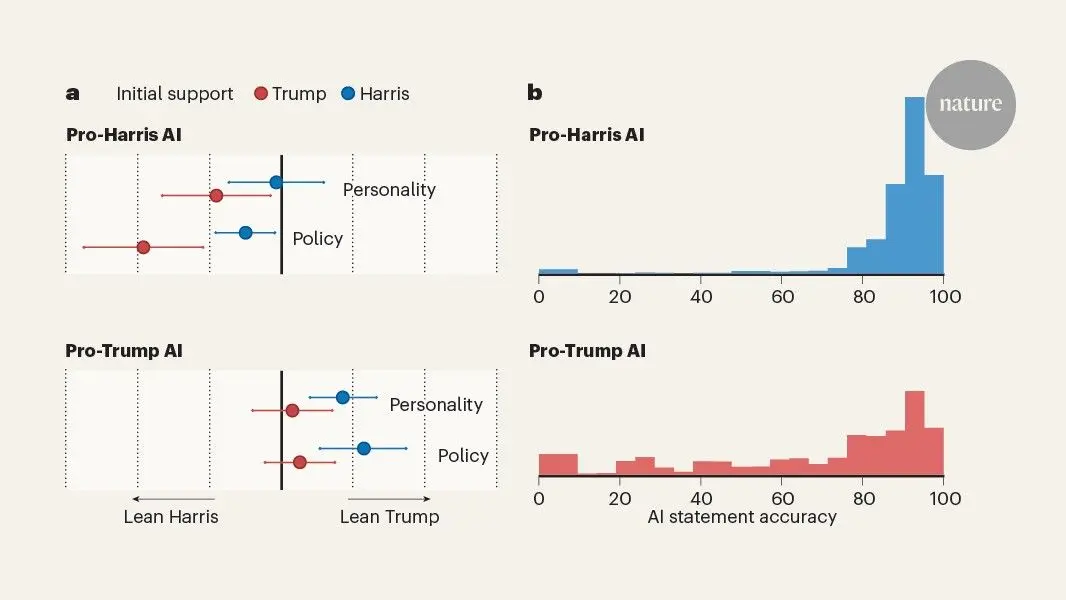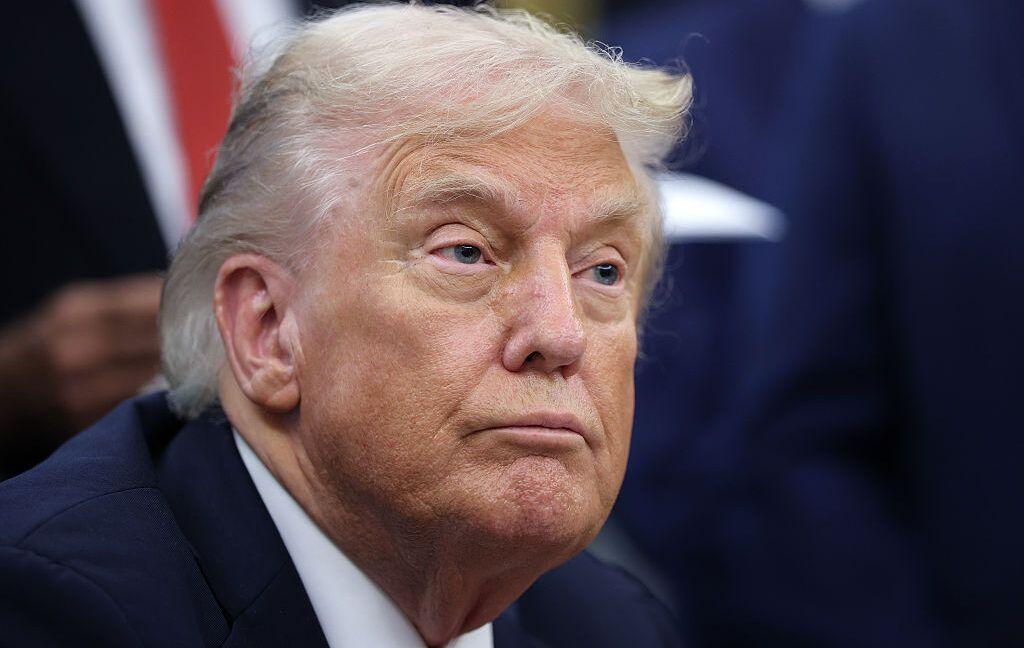Nvidia's Long-Term Outlook: Analyzing the Tech Giant's 20-Year Trajectory
2 Sources
2 Sources
[1]
Where Will Nvidia Stock Be in 20 Years? | The Motley Fool
The history of two legacy tech stocks could hold the key to understanding Nvidia's future. There's one stock that everyone wants to talk about: Nvidia (NVDA -2.61%). And for good reason. The stock has gained nearly 1,000% in less than two years, meaning a $10,000 investment in late 2022 would be worth almost $100,000 today. While nobody can predict what will happen, there are two paths forward for Nvidia. One path is promising; the other is downright terrifying. Let's dive in and see which is more likely. The bull case for Nvidia goes something like this: Artificial intelligence (AI) is the story of the next 20 years. It will bring changes to the way people interact on a level equal to or exceeding those brought on by the smartphone in the mid-2000s. Therefore, the best historical comparison for Nvidia is Apple in 2004. Back then, Apple's hot new product was -- wait for it -- the iPod. Remember that? The company wouldn't debut its first iPhone for another three years. Nevertheless, Apple was already well on its way to becoming the world's largest company. In 2004, its stock grew by more than 200%, making it the top performer in the S&P 500. It would be incredibly difficult for Nvidia to repeat that performance, but it is possible. AI is a fascinating new technology, and 20 years is a very long time, giving the company plenty of runway to live up to the lofty expectations surrounding its stock. But what about the bear case? This is the bear case for Nvidia: AI is a promising technology but overhyped. Due to elevated valuations in AI stocks, a stock market bubble has formed, and when it pops, Nvidia's stock will feel the pain. In short, Nvidia today is like Oracle in 2000. To recap, the 1990s were full of hope for the internet. In particular, the stock market went gaga for internet stocks. Valuations soared, not just for brand-new companies but also for legacy tech companies that were cashing in on the internet craze. In particular, Oracle, whose business revolved around facilitating the transition from mid-century mainframe computers to modern servers for enterprise clients, saw its stock skyrocket in the late 1990s. Unfortunately for Oracle, expectations ran far ahead of actual sales. At its peak in 2000, its stock traded with a price-to-sales (P/S) multiple of 24, far above its lifetime average of 5. When the dot-com bubble burst in 2001, Oracle experienced an 85% drawdown. The stock has taken over 20 years to recover its pre-bubble high. Those who bought in the summer of 2000 and held through 2020 would have made almost no money on their investment. It's a lesson that even companies with the most promising technological innovations and solid business models don't necessarily make great investments. On the one hand, Nvidia's P/S ratio has a scary resemblance to Oracle's in the run-up to its crash in 2001. That should give pause to any Nvidia bull. Simply put, the stock is so expensive now that some moderation must occur. Either the company's sales will continue to grow like a weed to bring down the ratio, or the stock price will have to come down. Factors such as increased competition, market saturation, or a slowdown in AI and semiconductor spending could decrease Nvidia's P/S ratio. My gut tells me it's the latter, although the party could continue for some time. Either way, I recommend caution with Nvidia stock. Unlike many of its mega-cap peers, the company lacks a well-diversified business model. Its stock is performing well because AI and semiconductor spending has gone through the roof, but that trend may taper off -- particularly if the economy deteriorates or enters a recession. Moreover, if the demand for AI and semiconductor technology were to decline, Nvidia's stock could be in for a rough ride -- perhaps as bad as Oracle's 23 years ago.
[2]
Where Will Nvidia Stock Be in 20 Years?
There's one stock that everyone wants to talk about: Nvidia (NASDAQ: NVDA). And for good reason. The stock has gained nearly 1,000% in less than two years, meaning a $10,000 investment in late 2022 would be worth almost $100,000 today. While nobody can predict what will happen, there are two paths forward for Nvidia. One path is promising; the other is downright terrifying. Let's dive in and see which is more likely. The bull case for Nvidia goes something like this: Artificial intelligence (AI) is the story of the next 20 years. It will bring changes to the way people interact on a level equal to or exceeding those brought on by the smartphone in the mid-2000s. Therefore, the best historical comparison for Nvidia is Apple in 2004. Back then, Apple's hot new product was -- wait for it -- the iPod. Remember that? The company wouldn't debut its first iPhone for another three years. Nevertheless, Apple was already well on its way to becoming the world's largest company. In 2004, its stock grew by more than 200%, making it the top performer in the S&P 500. It would be incredibly difficult for Nvidia to repeat that performance, but it is possible. AI is a fascinating new technology, and 20 years is a very long time, giving the company plenty of runway to live up to the lofty expectations surrounding its stock. This is the bear case for Nvidia: AI is a promising technology but overhyped. Due to elevated valuations in AI stocks, a stock market bubble has formed, and when it pops, Nvidia's stock will feel the pain. In short, Nvidia today is like Oracle in 2000. To recap, the 1990s were full of hope for the internet. In particular, the stock market went gaga for internet stocks. Valuations soared, not just for brand-new companies but also for legacy tech companies that were cashing in on the internet craze. In particular, Oracle, whose business revolved around facilitating the transition from mid-century mainframe computers to modern servers for enterprise clients, saw its stock skyrocket in the late 1990s. Unfortunately for Oracle, expectations ran far ahead of actual sales. At its peak in 2000, its stock traded with a price-to-sales (P/S) multiple of 24, far above its lifetime average of 5. ORCL PS ratio data by YCharts. When the dot-com bubble burst in 2001, Oracle experienced an 85% drawdown. The stock has taken over 20 years to recover its pre-bubble high. Those who bought in the summer of 2000 and held through 2020 would have made almost no money on their investment. ORCL data by YCharts. It's a lesson that even companies with the most promising technological innovations and solid business models don't necessarily make great investments. So which is it? On the one hand, Nvidia's P/S ratio has a scary resemblance to Oracle's in the run-up to its crash in 2001. ORCL PS ratio; data by YCharts. That should give pause to any Nvidia bull. Simply put, the stock is so expensive now that some moderation must occur. Either the company's sales will continue to grow like a weed to bring down the ratio, or the stock price will have to come down. Factors such as increased competition, market saturation, or a slowdown in AI and semiconductor spending could decrease Nvidia's P/S ratio. My gut tells me it's the latter, although the party could continue for some time. Either way, I recommend caution with Nvidia stock. Unlike many of its mega-cap peers, the company lacks a well-diversified business model. Its stock is performing well because AI and semiconductor spending has gone through the roof, but that trend may taper off -- particularly if the economy deteriorates or enters a recession. Moreover, if the demand for AI and semiconductor technology were to decline, Nvidia's stock could be in for a rough ride -- perhaps as bad as Oracle's 23 years ago. The Motley Fool Stock Advisor analyst team just identified what they believe are the 10 best stocks for investors to buy now... and Nvidia wasn't one of them. The 10 stocks that made the cut could produce monster returns in the coming years. Consider when Nvidia made this list on April 15, 2005... if you invested $1,000 at the time of our recommendation, you'd have $722,626!* Stock Advisor provides investors with an easy-to-follow blueprint for success, including guidance on building a portfolio, regular updates from analysts, and two new stock picks each month. The Stock Advisor service has more than quadrupled the return of S&P 500 since 2002*. Jake Lerch has positions in Nvidia. The Motley Fool has positions in and recommends Apple, Nvidia, and Oracle. The Motley Fool has a disclosure policy. The views and opinions expressed herein are the views and opinions of the author and do not necessarily reflect those of Nasdaq, Inc.
Share
Share
Copy Link
Exploring Nvidia's potential stock performance over the next two decades, considering its current market position, growth drivers, and challenges in the rapidly evolving tech landscape.

Nvidia's Current Market Position
Nvidia Corporation, a leader in graphics processing units (GPUs) and artificial intelligence (AI) technologies, has seen remarkable growth in recent years. As of July 2023, the company's stock has surged by over 200% year-to-date, propelling its market capitalization to approximately $1 trillion
1
. This impressive performance has led investors to question the sustainability of Nvidia's growth and its potential stock value two decades from now.Growth Drivers and Market Opportunities
Nvidia's future prospects are closely tied to the expanding AI and cloud computing markets. The company's GPUs are essential for training large language models and powering data centers, positioning Nvidia at the forefront of the AI revolution
2
. As businesses increasingly adopt AI technologies, Nvidia's products are likely to remain in high demand, potentially driving long-term growth.Challenges and Competition
Despite its strong position, Nvidia faces significant challenges. The tech industry is known for rapid changes and disruptive innovations. Companies like AMD and Intel are working to close the gap in GPU technology, while tech giants such as Google and Amazon are developing their own AI chips
1
. Nvidia must continue to innovate to maintain its market leadership over the next 20 years.Financial Considerations
Nvidia's current valuation metrics, including a price-to-earnings ratio of around 200, suggest high growth expectations
2
. To justify and potentially increase its stock price over the long term, Nvidia will need to consistently deliver strong financial results and expand its market share in key segments.Related Stories
Potential Stock Performance Scenarios
Given the uncertainties in predicting stock performance over such an extended period, analysts propose various scenarios for Nvidia's stock in 20 years:
-
Optimistic Scenario: If Nvidia maintains its technological edge and capitalizes on the AI boom, its stock could potentially reach $5,000 per share or higher
1
. -
Conservative Scenario: Accounting for market saturation and increased competition, Nvidia's stock might see more modest growth, potentially reaching $1,000 to $2,000 per share
2
. -
Bearish Scenario: If Nvidia loses its competitive advantage or faces significant market disruptions, the stock could underperform, possibly trading below current levels.
Factors Influencing Long-Term Performance
Several factors will influence Nvidia's long-term stock performance:
- Technological Innovation: Continued leadership in GPU and AI technologies is crucial for Nvidia's growth.
- Market Expansion: Success in entering new markets, such as autonomous vehicles and edge computing, could provide additional growth avenues.
- Economic Conditions: Global economic factors and tech industry trends will impact Nvidia's performance.
- Regulatory Environment: Potential regulations in AI and data privacy could affect Nvidia's operations and growth potential.
References
Summarized by
Navi
[1]
[2]










